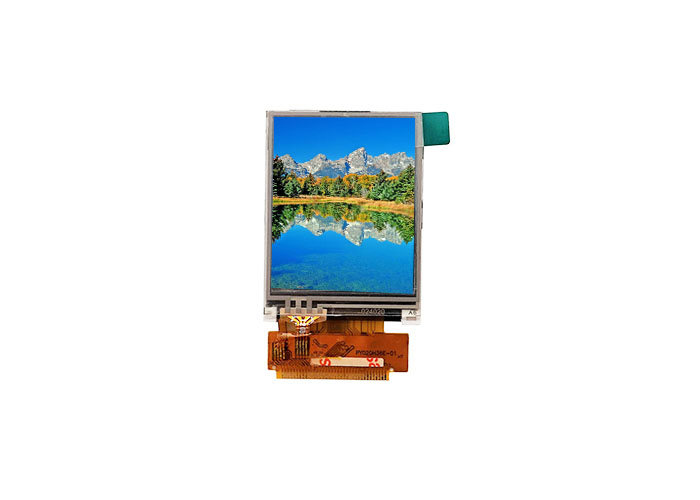Views: 236 Author: Reshine Display Publish Time: 2023-11-17 Origin: Site









Touch screens have become extremely common in our daily lives. Touch panels are used in devices to allow user interaction without the use of a keyboard or mouse. But did you know that there are a few distinct types of touch screens? Resistive, surface capacitance, projected capacitance, surface acoustic wave, and infrared are the five most common types.

These days, resistive touch is the most widely used touch technology. Because it is less expensive to produce and more convenient to use in a variety of settings. A resistive touch screen is made up of two very thin material layers separated by a thin gap. The top layer is typically made of clear polycarbonate material, while the bottom layer is rigid. PET film and glass are commonly used by LCD manufacturers for these layers. The upper and lower layers are lined with conducting material, such as indium tin oxide (ITO), and are separated by a narrow gap. When a user touches the screen, two metallic layers make contact, causing resistance to change.
Resistive touchscreens are classified into three types. The type of resistive layout determines the overall circuit's durability and sensitivity.
Both the top and bottom layers of a 4-wire analog setup contain two electrodes known as "bushbars." These electrodes are perpendicular to each other.

The electrodes on top represent the positive and negative Y axes, while the electrodes on the bottom represent the positive and negative X axes. Using this configuration, the screen can detect the coordinates where the two layers have collided.
A 5-wire analog setup consists of four electrodes placed in each corner of the bottom layer, with four wires connecting them. The fifth wire is a "sensing wire" that is embedded in the top layer.

The sensing wire sends the voltage for the coordinates to the device processor when the user's finger or stylus touches an area of the two layers. The 5-wire analog circuit is more durable than other designs because it has fewer components and a simpler design. Click here for 5-wire Resistive Touchscreen Tft Lcd Display.
The 8-wire sensing circuit is the most sensitive resistive touchscreen design. It has a similar layout to the 4-wire one, but each of the "busbars" is connected by two wires.

8-wire touchscreens are more stable than 4- and 5-wire solutions and can detect the precise location of touch commands.
It can be activated with almost any object (finger, stylus, gloved hand, pen, etc.).
Has a tactile sensation
Touch technology at the lowest possible cost
Power consumption is minimal.
Surface contaminants and liquids are not a problem.
Disadvantages:
Image clarity is lower when compared to other touch technologies.
Typically, the screen material is more prone to scratching and damage.
Light touch sensitivity is reduced.
Capacitive touch panel technology, unlike resistive technology, is based on the capacitance of the human body, rather than mechanical pressure. Capacitive touch panels are classified into two types: surface capacitive and projected capacitive. body
Surface capacitive touch screens are the market's second most popular type of touch screen. A thin glass surface covers the capacitive touchscreen in a capacitive touch panel. On top of the LCD glass panel is a thin layer of transparent electrodes beneath this glass surface.

When a human finger touches the screen, a portion of the electrical charge from the screen is transferred to the user. Sensors located at the four corners detect changes in capacitance, allowing the controller to determine the touch point.
Surface capacitance is similar to projected capacitance, but it has two major advantages: it can be activated with fingers inside thin surgical or cotton gloves, and it supports multi-touch activation.

There is a pattern of electrode layers or the matrix under the glass with a protective cover. This pattern creates the plane of X and Y coordinates that the controller uses to calculate the touch event.
Advantages:
improved image clarity
The screen is scratch-resistant and durable.
Surface contaminants and liquids are not a problem.
Disadvantages:
EMI/RFI sensitive; requires bare finger or capacitive stylus

The SAW (surface acoustic wave) touchscreen creates an invisible grid of ultrasonic waves on the surface by using a series of piezoelectric transducers and receivers along the sides of the glass plate. A portion of the wave is absorbed when the panel is touched. This enables the receiving transducer to identify the touch point and send this information to the computer. A finger, gloved hand, or soft-tip stylus can be used to activate SAW monitors. SAW monitors are simple to use and provide excellent visibility.
Advantages:
Image clarity is excellent.
Superior scratch resistance to capacitive screens
a high level of "touch life"
Disadvantages:
Will not work with difficult items
Water droplets could result in false activation.
No-touch areas can be caused by solid contaminants on the screen.

Infrared touch-screen monitors do not use an additional screen or screen sandwich to overlay the display. Infrared monitors, on the other hand, use IR emitters and receivers to create an invisible grid of light beams across the screen. This ensures the best image quality possible. The sensors can locate the touch point when an object interrupts the invisible infrared light beam.
Advantages:
All touch technologies have the best image clarity and light transmission.
There is no "touch-life" issue.
Surface scratches are not a problem.
Disadvantages:
Because infrared beams are above the glass surface, accidental activation is possible.
Foreign object accumulation on the screen or frame could obstruct the infrared light beam.
Water, snow, and rain sensitivity
It may be susceptible to interference from ambient light.
Price increase
Boosting Urban Mobility: Making Public Transport the Go-To Choice in Your City
How Do You Troubleshoot Common Issues with MIPI LCD Displays?
What Are the Key Technical Specifications to Consider When Selecting a MIPI LCD Display?
What Are the Pros and Cons of Using LCD Displays for Gaming?
What Are the Environmental Impacts of Manufacturing LCD Displays?
How Does the Viewing Angle Affect the Quality of LCD Displays?